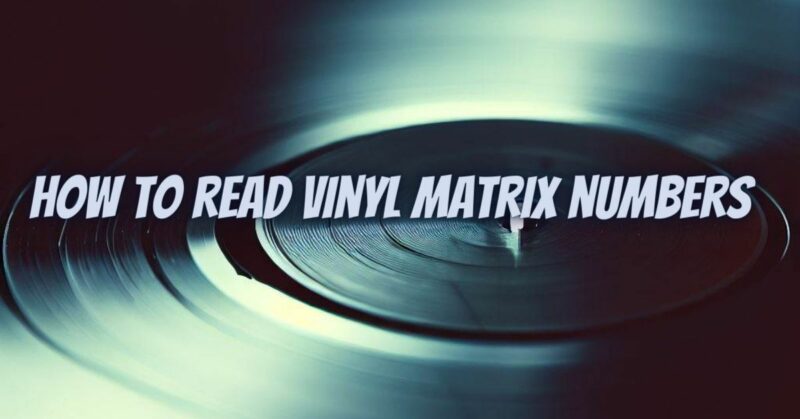Vinyl records, cherished for their warm analog sound and tactile charm, have made a remarkable comeback in recent years. When exploring your vinyl collection or hunting for rare finds in record stores, you might encounter a set of mysterious characters etched into the inner grooves of your vinyl. These characters, known as vinyl matrix numbers, hold valuable information about your record. In this informative article, we’ll delve into the world of vinyl matrix numbers, teaching you how to decipher and make sense of them.
Understanding Vinyl Matrix Numbers
Vinyl matrix numbers, often referred to as matrix or runout numbers, are inscriptions etched into the dead wax area of a vinyl record’s label. They serve several essential purposes:
- Identification: Matrix numbers help identify individual pressings of a record. Even if a record has the same catalog number, the matrix number can differentiate between various editions, pressings, or reissues.
- Tracking: During the vinyl manufacturing process, matrix numbers assist in tracking and quality control. They help ensure that the correct stamper is used and that records meet the desired specifications.
- Copyright and Ownership: Vinyl matrix numbers sometimes contain copyright information and ownership details. This can include the name of the pressing plant or mastering engineer.
Deciphering Vinyl Matrix Numbers
To decode vinyl matrix numbers, you need to understand the basic format and elements typically found in these inscriptions. Here’s how to break them down:
- Catalog Number: The first part of the matrix number often corresponds to the record’s catalog number or label code. This helps identify the specific release.
- Side Designation: Some matrix numbers include a letter (e.g., A or B) to indicate which side of the record it refers to. A “1” typically designates side A, and “2” designates side B.
- Mastering Engineer’s Initials: Occasionally, you may find the initials of the mastering engineer or technician involved in the record’s production.
- Pressing Plant Code: This is a crucial element in matrix numbers. It identifies the pressing plant where the record was manufactured. Different plants may produce records with slight variations in sound quality and quality control standards.
- Sequential Identifiers: These numbers differentiate individual copies within a pressing run. They may appear as a combination of digits and/or letters.
- Copyright and Ownership Information: In some cases, the matrix number may include copyright symbols, ownership names, or additional information related to the record label or mastering process.
Using an Example
Let’s break down a hypothetical vinyl matrix number to illustrate how to interpret it:
Matrix Number: ABC-12345-A-1A
- “ABC-12345”: This part could be the catalog number or label code, helping identify the specific release.
- “A”: The letter “A” indicates side A of the record.
- “1”: This could be the sequential identifier within a pressing run.
- “A”: This may represent the pressing plant or mastering engineer.
Tips for Interpretation
- Cross-Reference with Label: To gather more information about your vinyl record, cross-reference the matrix number with the label, cover, and other identifying details.
- Online Databases: Numerous online resources and vinyl database websites can help you decode matrix numbers and gather information about your record’s pressing history.
- Variations: Keep in mind that matrix numbers may vary in format and content, depending on the record label and the era of production.
Understanding vinyl matrix numbers adds a layer of intrigue and knowledge to your vinyl collecting journey. These cryptic inscriptions hold valuable clues about the history, authenticity, and uniqueness of each record in your collection. By mastering the art of deciphering matrix numbers, you can unlock the hidden stories behind your favorite vinyl records and enhance your appreciation for the world of analog music.

